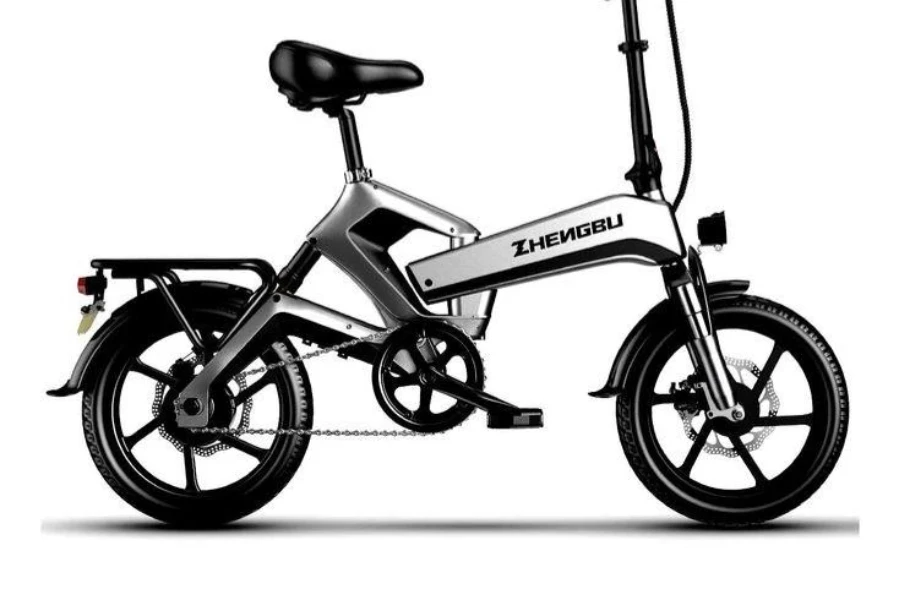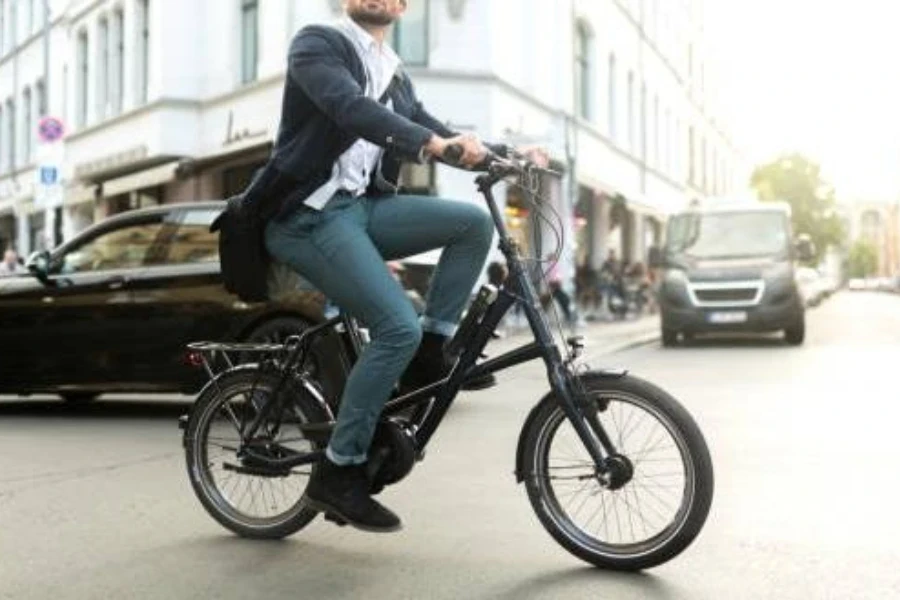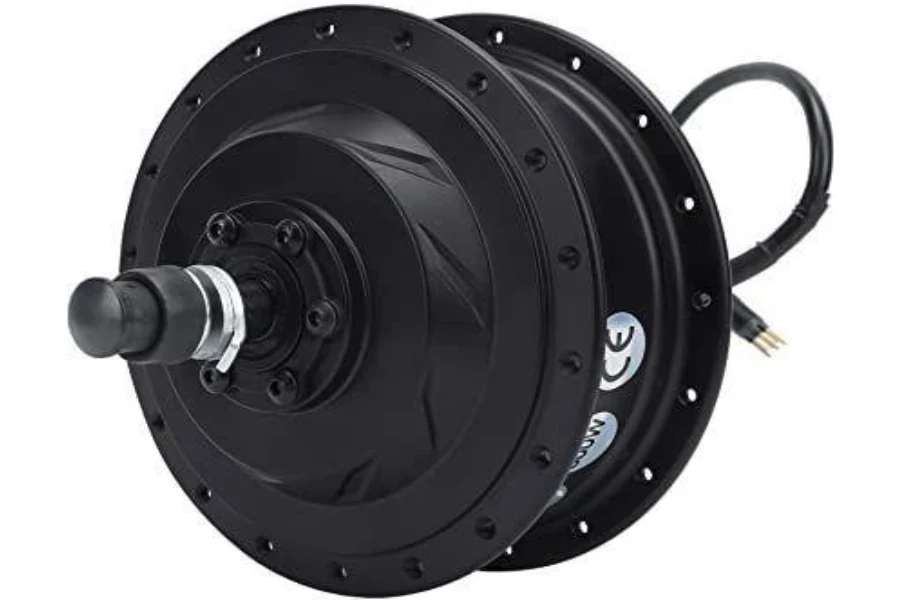Bicycles are fantastic, and electric bikes take the awesomeness to a whole new level, sparking excitement.
Thanks to the battery-powered motor that provides pedaling assistance and a power boost, riders can effortlessly cruise faster, cover more distances, and enjoy an even more exhilarating experience.
For daily commuters, hikers, or bicycle lovers, electric bikes help save fuel costs and make riding exciting, providing adequate speed for commuting. However, choosing the best ones to sell is a different ballgame, as retailers must make several considerations first.
Thankfully, this article will explore those considerations, providing the insights businesses need to profit from e-bikes in 2024.
Table of Contents
Key market insights for the global electric bike market
What sellers should consider before buying electric bicycles
Final words
Key market insights for the global electric bike market

The global electric bicycle market was valued at US $43.32 billion in 2023. The market is rapidly growing, and experts predict that it will grow at a 15.6% compound annual growth rate (CAGR) and reach a staggering US $119.72 billion by 2030.
The decrease in the use of public transit in 2020–2021 contributed to the spike in the market’s growth. The numbers don’t lie! And Google Ads data proves millions of people want electric bicycles. With a whopping 20,400,000 average monthly online searches, electric bicycles can be said to dominate the convenient vehicle market.
What sellers should consider before buying electric bicycles
Class

Because electric bikes are technically motorized, it became necessary to regulate them according to their abilities. Hence, the e-bike market has three major classes: 1, 2, and 3.
- Class 1 electric bicycles are pedal-assist only with no throttle. They also have a maximum assisted speed of 20 mph.
- Class 2 electric bikes also have a maximum of 20 mph assisted speed but offer throttle assistance.
- Class 3 electric bikes have no throttle and have a maximum assisted speed of 28 mph.
Note: Some state regulations prevent consumers from riding certain bike classes. So, businesses must ensure their preferred e-bikes don’t break state laws.
Bike types

Electric bicycles come in a range of styles designed for different terrains.
Classic e-bikes are suitable for leisurely trips on mostly flat ground. They have some form of suspension at the front to soak up bumps, but typically have fewer gears and assistance levels than other bikes. They are the most popular for everyday use.
Hybrid bikes can work on any ground, from tarmac to gravel tracks. They also come with a suspension form to absorb shocks and smooth rides.
Mountain bikes have designs that help take the stress out of climbs. Plus, their suspension systems can easily handle the bumpy terrain famous for mountains. However, they are very heavy, making placing them in transport vehicles a workout.
Folding bikes are a bit heavier than classic bikes but are a great choice for people looking for portability. They are easy to store in a car or maximize limited parking spaces.
Weight

The heavy weight that comes with an electric bicycle is inevitable! Batteries and motors mean extra weight. Electric bicycles could weigh anything from 20 to 100 kg.
Consumers must consider their regular movements with the e-bike to decide which type is easier to handle. For instance, consumers who need to walk up some stairs on their commute may prefer lighter models.
Here’s a table showing the different weight sizes for e-bikes:
| Electric bike type | Typical weight range (kg) |
| City electric bikes | 13.6 to 22.7 kg |
| Folding electric bikes | 15.9 to 22.7 kg |
| Mountain electric bikes | 20.4 to 31.8 kg |
| Cargo electric bikes | 27.2 to 45.4 kg |
| Electric road bikes | 13.6 to 20.4 kg |
Mid-drive or hub motor

Motors and their position in the bike impact how the bike handles weight distribution. In this regard, businesses can find two motor types: hub motors and mid-drive motors.
Usually, manufacturers can fit hub motors into the front or rear wheel. They are the go-to for flat or urban riding and are more affordable and easier to maintain.
On the other hand, manufacturers mount mid-drive motors near the bike’s pedals and deliver power directly to the chain. Most of these motors come with inbuilt sensors, automatically adjusting the level of assistance based on how hard consumers pedal. Although they are more expensive, these motors provide better reliability.
Battery life

Electric bicycles use lithium-ion batteries, which slowly degrade over time. However, if they’re charged regularly and kept in suitable environments, they should last a few years before needing a change.
Some e-bikes allow users to remove the batteries and take them indoors. It’s a great option for people who can’t store their bikes indoors. Check out the table below for the expected range for different battery capacities.
| Battery capacity (watt-hour) | Typical range (miles) |
| 250 to 300 Wh | 10 to 20 miles |
| 400 to 500 Wh | 20 to 30 miles |
| 600 to 750 Wh | 30 to 50 miles |
| 1,000 Wh+ | 50 to 100 miles |
Extra features

Electric bicycles often incorporate additional features that make them more appealing. For example, they can come with sensors that activate the motor when pedaling and deactivate it when it stops.
Another handy feature is the walk mode, which reduces the effort required when pushing a heavy e-bike on the pavement. Consumers with an extra passenger or child will love e-bikes with additional seats.
Some e-bikes also come with an electric conversion kit consisting of batteries, front or rear wheels, electric bulbs, and display units.
Final words
Electric bicycles are a revolutionary means of transport. Their ability to maneuver all terrains with much more care than their non-motorized counterparts makes them the number one choice for consumers.
The world is constantly evolving, and businesses must grow, too. It’s time to ditch the old standard bikes and invest in their electric counterparts. It’s one of the biggest markets this year and will remain profitable in 2024.




